
Genetic, genealogical and circumstantial evidence accumulated by the Acree Surname DNA Project, indicates that most Acrees living in the U.S. descend from a common ancestor named William Acree, who was born about 1710 and settled in Hanover Co., Virginia, about 1730, probably as a recent immigrant from the English/Scottish "borders" area (see below). He died about 1767, when he was succeeded in county affairs by his son, Joshua, whose four brothers had moved away.
Our evidence also indicates that a substantial minority of Acrees living in the U.S. descend from a different William Acree, genetically unrelated to the above progenitor, who was born in Frederick Co., Maryland, in 1752 and migrated as a youth with his widowed mother to Guilford Co., North Carolina, in the mid 1760s. After serving in the Revolutionary War, he migrated with his extended family to Wayne Co., Kentucky, in about 1804 and died there in 1833. On the basis of DNA and circumstantial evidence, it has been deduced that this second William descended from an Akridge family, also of British origin.
Our evidence indicates further that many Acrees living in the U.S. descend from Jacob Acra (c1710-1772) of Middlesex Co., Virginia, about whom little is known. Genetically unrelated to both of the above Williams, he appears to have been born in that area.
There were other early Acrees in colonial America, who may have been related to the above three men. They lived mainly in the Tidewater area of Virginia and appeared in county documents of the late 17th and early 18th centuries. Their surnames were variously spelled at the time - handwritten or later transcribed as Acre, Acres, Acers, Akres, Akues, Ackers, Akers, Acrill, etc. - inconsistently for the same men, as it suited them or the officials who phonetically recorded their participation in contemporary events, including court appearances and property transactions.
These early Acrees resided in the counties shown on the Tidewater map below, which uses 1730 boundaries. Unfortunately, as the result of both paucity and loss of pertinent records, their years of residence and inter-relationships are, for the most part, indefinite. Approximate years of birth (not residence), rounded to generational divides (1640, 1670 and 1700) for discernment, follow their given names. (Progenitors William and Jacob of Virginia appear on the map, while William of Maryland does not.)

Regarding the two earliest Acrees appearing on the map: William of Lancaster Co., who died in 1688, was not an Acree progenitor because his descending male line ended with the death of his only son, William of Richmond Co., according to court records. William of Essex Co. (created from Old Rappanahhock Co.), who died in 1702, is the claimed ancestor of an unrelated Akers family line through a son who was also named William.
DNA evidence accumulated by the project indicates that most, if not all, Acree immigrants to America came from the British Isles, though few of them appear in ship passenger lists. Finding them by keyword in computer records is complicated by our surname's unfortunate equivalence with the common word for land measurement (acre).
An analysis of available birth records in the British Isles from the early 17th century to the mid-18th century indicates that the Acree surname was fairly common in Britain. Those records, like those in colonial America, never used the spelling Acree. Instead, our surname was written or later transcribed in more than two dozen different ways, including Acare, Accore, Ackares, Ackre, Akers, Hacker and, most commonly, Acres. There is, of course, no certainty that the men having those names were closely related, but the men living in the same geographic vicinity probably were. Their birth records were strikingly extant in the English counties of Berkshire, Hertfordshire, Kent, Lancashire, London and Norfolk. So, it's likely that, before they left for America, Acree emigrants resided in one or more of those counties, which are highlighted on the map below.

There is good reason to focus particularly on Lancashire, because there is substantial genetic/genealogical evidence that our Acrees came from the English/Scottish "borders" area, within the huge influx of "Scotch-Irish" (Scots-Irish) immigrants who began to reach American shores in the second decade of the 18th century. Focus on Lancashire also coincides with the possibility that these Acrees' forebears may have derived their surname in association with the Dacre baronial land holdings that existed in adjacent Cumbria. For discussion of that possibility, see Origin of the Acree Surname webpage.
Acree family lore has often asserted a Scots-Irish background, despite the inconvenience that our surname (however spelled) is normally excluded from Scots-Irish surname lists. Many colonial Americans who considered themselves Scots-Irish were actually descendants of English folk who lived in the long-disputed "borders" area, where the contentious Scots-Irish originated before many of them famously moved (or were removed) across the Irish Sea to northern Ireland.
Focusing particularly on William Acree of Hanover Co., Virginia (the progenitor of most Acrees living in the U.S.), he was almost certainly a British borderer who, as a young man, arrived with companions in the post-1715 Scots-Irish emigration wave. The surname of his bride, Elizabeth Willis, is considered to be Scots-Irish. Hanover Co., moreover, was a "seed" area, where borderers gathered before they or their offspring migrated south - to or through North Carolina. Several William Acrees (of various surname spellings) were born in Lancashire during the relevant 1690-1715 years, any one of whom may have emigrated to Virginia and become William of Hanover Co. The most likely prospect was the William "Ackers" who was born in Prescot, Lancashire, in July 1712 to John and Deborah Ackers. He may have been the William "Hacker" (a phonetic equivalent), who arrived in Virginia in 1730. (Since the foregoing sentence was published here a few years ago, several family trees on the internet, in copycat fashion, have erroneously included "Hacker" or "Hawker" as William's middle or nickname.)
Several men with non-Acree surnames, have been found, as a result of genetic testing, to closely match the Y-DNA profile of descendants of William Acree of Virginia. Surnamed Ashley, Brown, Collier, Cowpe, Hall, Peel, Tweedale, Unsworth, Wells, Williamson and Willoughby, they have patrilineal lineages that converged somehow with that of William several centuries ago. All of those whose lineages have been extensively researched have early roots in historic Lancashire, specifically within the 65-mile corridor from Liverpool to Leeds, which includes Prescot, Wigan, Manchester, Rochdale, Bradford, and the Yarrow River. So, it is likely that William Acree (by whatever surname variation he was born) lived in that area, too, before coming to Virginia.
Looking back into unrecorded history, nearly all of our project participants have Y-chromosome DNA profiles ("haplotypes") that pertain to a genetic clan ("haplogroup") designated R1b, also known as M343 for that defining "Y-SNP" mutation. R1b is the most common male haplogroup in western Europe and is thought to have arrived there from the Eurasian steppe some 5,000 years ago with the spread of the Yamnaya shepherd and subsequent Corded Ware cultures that largely displaced the earlier agricultural population.
Haplogroups are fascinating from anthropological and early historical perspectives, but they have limited significance for individuals living today because they focus upon a minute part of one's total ancestry, the part that is shown along the very top of everyone's family-tree chart - for most project participants our strictly Acree lineage. Each of our complete family histories includes millions of ancestors (with, necessarily, millions of duplicates), as they extend back into pre-historic times, when the major haplogroups evolved in relative isolation after descending from our common early-human male and female ancestors who lived in Africa about 200,000 years ago. Humanity has always been fundamentally inter-related. We are truly all one family.
An important aim of this project, however, is to discern when our early Acree forefathers arrived in the British Isles and where they have subsequently lived. Haplogroups are relevant to that pursuit. More widespread testing is progressively distinguishing hierarchical sub-divisions called "subclades" that have emerged, like branches on a tree, within the past few thousand and now hundreds of years, allowing them to become increasingly applicable to genealogical research.
Origin of the Virginia Acrees
In this context, the majority of our project participants, who either descend from William Acree (c1710-c1767) of Hanover Co., Virginia, or share patrilineal forefathers who were born a couple hundred years before William but match his distinctive ancestral haplotype (today surnamed Ashley, Brown, Collier, Peel, Wells, etc., but grouped with the "Virginia Acrees" for convenience), have been found to belong to the well-established subclade R1b-S6915. Having originated about three thousand years ago in central Europe, its abbreviated evolution through ever-smaller subclades has been: M343>M269>L151>U106>L48>L47>Z159>S3251>S6915. (A new Y-SNP mutation occurs randomly within the Y-chromosome of a patrilineal lineage, but the observed average has been one every three generations - about every 100 years.)
Further testing among S6915 descendants has revealed three modern Y-SNPs possessed by William Acree's descendants that are less than 400 years old. One originated in William himself, in his father or, most likely, his grandfather, enabling us to verify descent from William by testing simply for the presence of that lone Y-SNP (A2156). A subsequent Y-SNP (A2155) originated in the c1735 birth of William's son, John Sr. (a remarkably precise find), enabling us to verify descent from him specifically through a test for that Y-SNP. An even later Y-SNP (A2154) was born in the mid-19th century and is possessed exclusively by close Acree cousins.
Thus, Y-SNP testing within our project has progressed far beyond assignment of participants to ancient haplogroups and their more modern but still-sizable established subclades. We have succeeded in discovering Y-SNPs resident in the Y-chromosomes of relatively small groups of Acree men who belong to exclusive subclades. An article published in the Journal of One-Name Studies explains how we accomplished these discoveries.
Yet, the search for early origins in the British Isles and earlier in continental Europe, continues. Other men belonging to the S6915 subclade are known to descend from patrilineal Scottish clans who lived in the western English-Scottish border area during Medieval times - providing further support for this long-presumed intermediate origin of the Virginia Acrees based upon family lore. As to the timing, S6915 is not believed to have been associated with the early inhabitants of the British Isles (Celts, Picts, etc.), with the invading Romans, or with the Germanic mercenaries the Romans brought with them. It more likely arrived in Britain following the Roman withdrawal - with the Angle/Saxon/Frisian invaders in the 5th-8th centuries, with the Norse/Danish Viking invaders in the 9th-10th centuries, or with the Norman invaders in the 11th century.

Recent "ancient DNA" evidence (see below) indicates that the Virginia Acrees descend from the aforementioned second group, the invading Vikings - from the Norse Vikings in particular. Thorough analysis of the remains of a Scandinavian buried 1,000 years ago in Iceland has revealed S6915 inheritance. This significant finding implies that men possessing that Y-SNP journeyed from central Europe, where it was found in a 400 AD Slovakian grave, to the English/Scottish border area by way of Scandinavia, the intervening Shetland/Orkney Islands, and the waterway between Ireland and Scotland.
This scenario fits earlier discovery of the S6915 predecessor Y-SNP Z159 (above) in both Sweden and Norway. It is in accord with the close Y-STR-marker (Y-SNP predecessor) matches that Swedish descendants have with our Virginia-Acree participants. And it fits historical maps employed by the People of the British Isles Project, which depict how invaders of Scandinavian descent left their homesteads in the Shetland/Orkney Islands to re-settle in Cumbria.
Our project has long anticipated this likely progression, in which the patrilineal Scandinavian forefather of the Virginia Acrees, whatever he called himself, arrived at the western English-Scottish border area as the first millennium AD was ending.
Our surmise arose from the early days of population genetics, when several large-scale studies focused on six Y-STR markers that defined a specific set of values as the ubiquitous Atlantic Modal Haplotype (AMH). Within this context, Stephen Oppenheimer, in his book, The Origins of the British, assigned the label "R1b-8a" to the set of Y-STR values that our project has identified as belonging to the Virginia Acrees. (It differs in two instances from the AMH). He characterized this combination as a "uniquely British" cluster with early origins in the Shetland Islands, belonging to raiders who spread down the west coast of Britain and around to Norfolk during the Dark Ages, as illustrated by his (modified) map below. His arbitrary label R1b-8a, based upon limited Y-STRs would today be associated with the Y-SNP S6915.
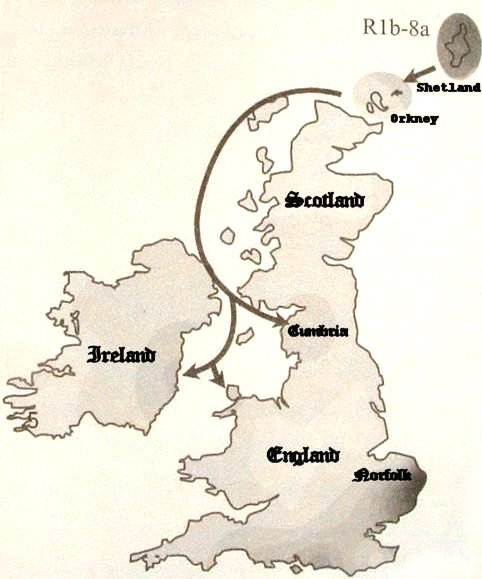
Click here to see a Timeline that shows how consecutive Y-SNP subclades and occasional Y-STR mutations are associated with the historical descent of the Virginia Acrees from antiquity.
Origin of the Maryland Acrees
In contrast, our minority project participants, who descend from William Akers (1726-1765) of Frederick Co., Maryland, or share patrilineal forefathers who were born a couple hundred years before him but match his distinctive ancestral haplotype (today surnamed Cox, Davis, Hardage, Phillips and Gibson, but grouped with the "Maryland Acrees" for convenience), have been found to belong also to the parent haplogroup R1b. However, their Y-STR values are equivalent to the AMH and they descend through entirely different Y-SNP subclades. Their abbreviated descent has been through: M343>M269>L151>P312>L21>DF13>Z251>Z16943>BY3970. Our project is able to verify descent from William of Maryland by testing for the possession of a subsequent, modern Y-SNP included in the diagram below (A9516).
It is estimated that the Maryland Acree subclade P312 separated from the Virginia Acree subclade U106 in the Vienna/Budapest area about 5,000 years ago. So, while the forefathers of both the Virginia and Maryland Acrees are believed to have lived in the English/Scottish border area in Medieval times, before emigration to America, they were quite distantly related to each other there, having descended from a shared ancestor who lived a few thousand years earlier in continental Europe. When their descendants subsequently adopted variants of the Acree surname, they did not do so as kin. The forefathers of the Acra, Acord and other Akers participants in our project were even more distantly related in Britain.
Origin of the New Jersey Akers
Our Akers participants who descend from William Akers of New Jersey (1650-1715) belong to S1194, a relatively small "sister subclade" to U106 and P312. Our project is able to verify descent from William of New Jersey by testing for the possession of the modern Y-SNP BY125155.
Origins of Other Akers Families
Our three Akers participants who descend from patrilineal English ancestors who did not emigrate to America belong to the distantly-related DF49, DF81 and DF110 subclades of P312.
Comparative Origins
Y-SNP testing has led to the conclusion that that diverse, essentially unrelated men adopted variants of the Akers surname in Medieval England. This diagram summarizes the historical Y-SNP descent of most of our project's participants:
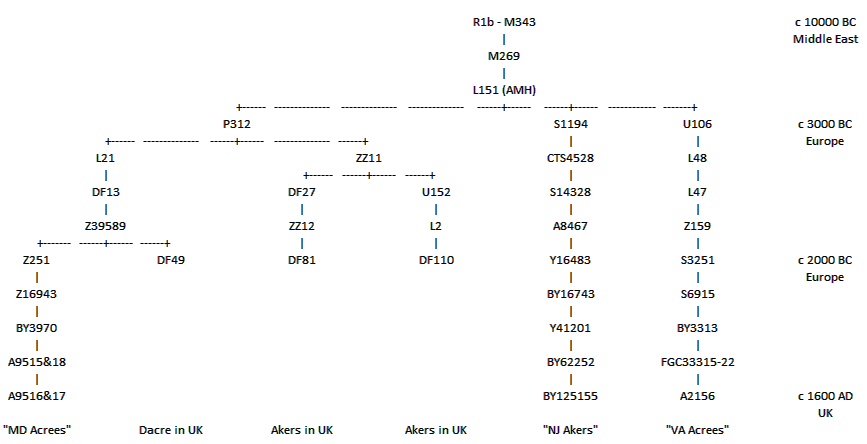
Acord and Acra Origins
Our Acord participant, who descends from Cornelius Acord (also known as Cronamus Acre - c1760-1839), has not yet been Y-SNP tested but he predictably belongs also to the R1b>M269 haplogroup.
Our two participants who descend from Jacob Acra (c1710-1772) have not yet been Y-SNP tested but predictably belong to an entirely different haplogroup - Haplogroup I. Their pre-historic descent is considered to be: I>M438>L460>M436>M223>Z185>Z180>L1198>Z166.
Early European Migration of the Virginia and Maryland Acrees
On the basis of accumulating Y-SNP and historical evidence, the map below displays the speculative multi-millennial northwestward migraton of the succesive patrilineal forefathers of our majority U106 Virginia (VA) Acrees (. . .) and our minority P312 Maryland (MD) Acrees (- - -) across continental Europe to their coincidentally common Medieval settlement in the English/Scottish border area. Because their respective routes through the mountainous terrain and intervening seas are entirely unknown, this representation is necessarily schematic, employing straight-line progression.
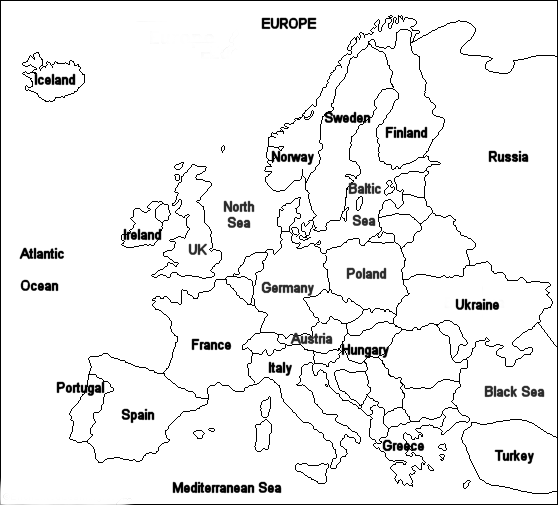
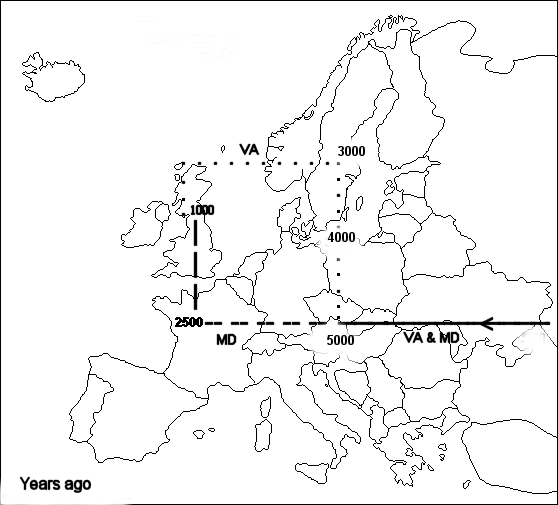
As more widespread Y-SNP testing and analysis of both the living and the dead leads to new discoveries and interpretations, it is expected that the early European origins of our participants will be assigned to increasingly specific geographical locations and timeframes.
Analysis of remotely deceased individuals is gaining prominence as requisite tachnology has improved considerably in recent years. Pertinently, there have been two so-called "ancient DNA" discoveries in Europe involving the subclade S6915 with which the Virginia Acrees are associated: (1) The remains of an honored warrior wearing a golden pendant of Roman origin, discovered in 2005 within an elaborate personal grave in northeastern Slovakia, were determined in 2018, following a decade of archaeological and genetic enalysis, to be those of a Germanic tribal chieftain who died in his early twenties about 400 AD. (2) Remains found many years ago near the capital city of Iceland were determined in 2018 to be those of a Norse Viking who died about 1,000 AD. Both findings are mentioned above in discussing the Virginia Acrees.
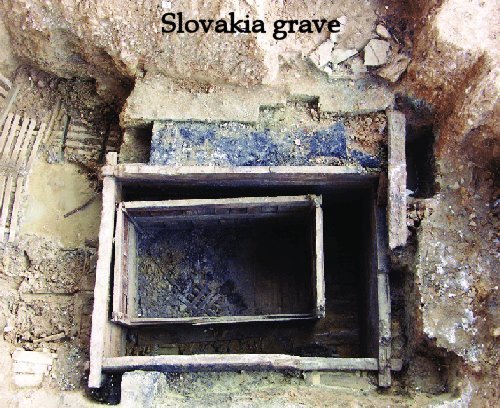


 by Charles Acree. All rights reserved.
by Charles Acree. All rights reserved.